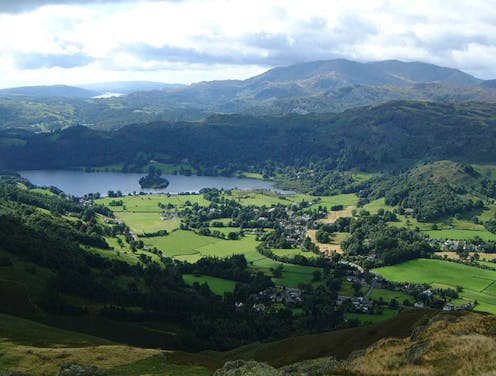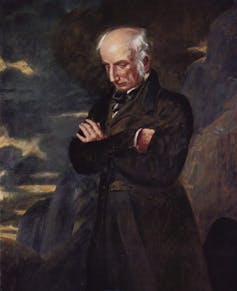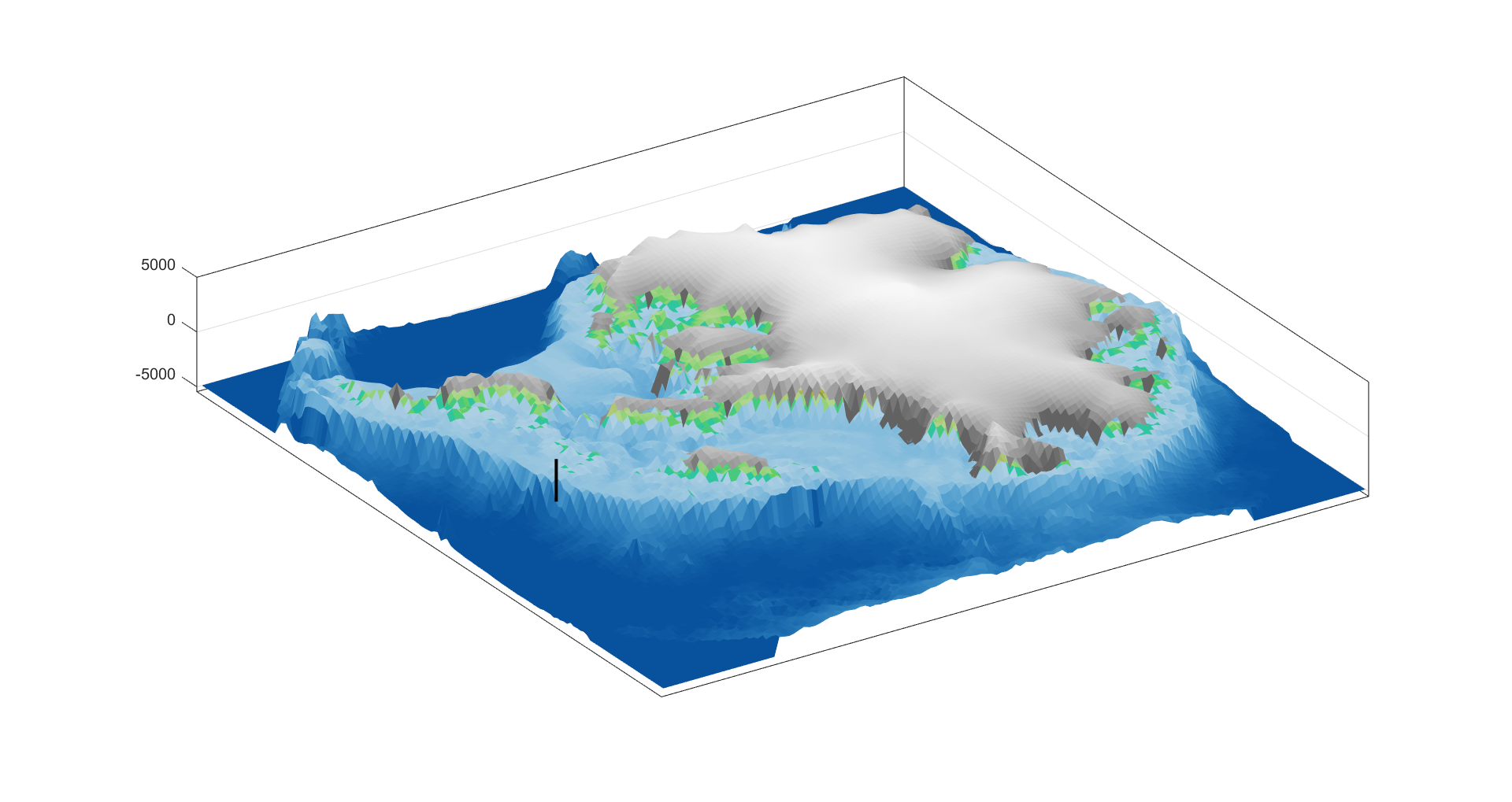William Wordsworth and the Romantics anticipated today's idea of a nature-positive life
The idea that human activity threatens nature, and that it is important to protect wild places, dates back to the dawn of the Industrial Revolution.

Musical performances usually happen in concert halls or clubs, but famed cellist Yo-Yo Ma is exploring a new venue: U.S. national parks. In a project called Our Common Nature, Ma is performing in settings such as the Great Smoky Mountains and the Grand Canyon. By making music and bringing people together in scenic places, Ma aims to help humans understand where they fit in the natural world.
“What if there’s a way that we can end up thinking and feeling and knowing that we are coming from nature, that we’re a part of nature, instead of just thinking: What can we use it for?” Ma mused in a recent New York Times article.
There’s a buzzword for this outlook: nature-positive. And it’s cropping up at high-level meetings, including the 2021 G-7 summit in Cornwall, England and the COP15 biodiversity conference in Montreal that adopted an ambitious framework for protecting nature in December 2022.
As a group of environmental leaders wrote in 2021: “A nature positive approach enriches biodiversity, stores carbon, purifies water and reduces pandemic risk. In short, a nature positive approach enhances the resilience of our planet and our societies.”
This is a dramatic shift from the mentality that has driven industrialization and global economic growth over the past 250 years. But it’s not new. As a researcher in the humanities and author of “Radical Wordsworth: The Poet Who Changed the World,” I see nature positivity as a welcome revival of an outlook that English poet William Wordsworth and other Romantics proposed in the late 1700s.
The birth of the sublime
In the preindustrial era, when life was dominated by hard manual labor, wild nature wasn’t viewed as a terribly attractive place. In the 1720s, writer Daniel Defoe, touring across the island of Great Britain, denounced the mountains and lakes of northwest England as “the wildest, most barren and frightful of any that I have passed over.”
The mountains were horrible to look at, impossible to pass over and, worst of all, had “no lead mines and veins of rich ore, no Coal Pits,” Defoe wrote. They were “all barren and wild, of no use or advantage either to Man or Beast.”
Attitudes began to change a generation later, with the expansion of a middle class that had the leisure and resources to enjoy a spot of tourism. Early guidebooks gave directions to viewpoints, or “stations,” that opened onto spectacularly beautiful vistas.
Philosophers and poets began to view natural phenomena such as ocean waves, lightning flashes over a mountain or the darkness of old-growth forests with awestruck pleasure rather than fear. They called these sights the “sublime,” a word that we still reach for when contemplating, say, the vastness of the Arctic or the Amazon. As Barry Lopez, author of “Arctic Dreams,” once wrote, the “sublime encounter” with such places offers us a profound “resonance with a system of unmanaged, nonhuman-centered relationships”.
Romanticism emerged as the steam engine and the spinning jenny were driving mass urbanization. As workers flocked from farms to grimy cities in search of manufacturing jobs, a reaction set in: yearning for a return to nature. This became the hallmark of the Romantic movement that flourished across Europe through the mid-1800s.
‘A sort of national property’
Many writers, thinkers and artists contributed to this outpouring of nature-positivity. Beethoven’s Pastoral Symphony and the paintings of J. M. W. Turner are examples. But in the English-speaking world, none were more influential than Wordsworth (1770-1850).
Born and raised in England’s Lake District, Wordsworth felt alienated from fellow students at Cambridge. As an aspiring journalist in London, he was stunned to discover that many people did not know their next door neighbor’s name. Only when Wordsworth returned to nature – first in the English west country and then when he went home to the Lakes – did he become his true self and write his greatest poetry.
In verse and prose, Wordsworth made a series of revolutionary claims. In the preface to his 1800 collection of poems, “Lyrical Ballads,” he argued that men and women who live indigenously within a natural environment are uniquely in tune with “the essential passions of the heart” because their very humanity is “incorporated with the beautiful and permanent forms of nature.”

In his “Guide to the Lakes,” Wordsworth warned against such innovations as planting non-native conifers that spoiled the beauty and eroded the soil of his native region. Instead, he proposed preserving places of outstanding natural beauty like the Lake District as “a sort of national property.”
This idea later would help to inspire the U.S. national park system and England’s National Trust. Today the concepts of conservation zones and protected areas are central to the goal of a nature-positive world.
Inspired by Wordsworth’s idea that the health of human society depends on a healthy relationship with the environment, the great Victorian social thinker John Ruskin turned economic theory on its head. In polemical pamphlets and public lectures, Ruskin argued that the basis of what was then known as “political economy” should be not labor and capital, production and consumption, but “Pure Air, Water, and Earth.”
Almost exactly 150 years later, on July 28, 2022, the United Nations General Assembly adopted a resolution recognizing a universal human right to a clean, healthy and sustainable environment.
Colonial conservation?
Wordsworth’s influence on the conservation movement wasn’t entirely benign. Late in life, he lamented that his very advocacy of the beauty of the Lake District had brought in a mass tourist industry that had the potential to destroy the very beauty he sought to preserve.
Furthermore, protecting wild places risks displacing indigenous peoples who have lived in harmony with the land for centuries. Creating conservation zones and protected areas in the rain forests of Central America and the Amazon basin has sometimes shut out local tribes.
Organizations such as the Sierra Club and the U.S. National Park Service are now striving to transcend this long history of “colonial conservation.” The importance of working together with indigenous peoples and learning from their time-honored values and conservation practices received new attention at major conferences on climate change and biodiversity in 2022, although some observers argued that the resulting commitments fell short of what was needed.
In my view, Wordsworth knew that the truly nature-positive are those whose livelihoods and senses of self and community are wholly bound to their native places. As he wrote in “Michael,” the great pastoral poem at the climax of “Lyrical Ballads”:
And grossly that man errs, who should suppose That the green valleys, and the streams and rocks, Were things indifferent to the Shepherd’s thoughts. ... these fields, these hills Which were his living Being even more Than his own blood—what could they less? had laid Strong hold on his affections, were to him A pleasurable feeling of blind love, The pleasure which there is in life itself. Jonathan Bate does not work for, consult, own shares in or receive funding from any company or organization that would benefit from this article, and has disclosed no relevant affiliations beyond their academic appointment.
Read These Next
Midlife weight gain can start long before menopause – but you can take steps early on to help your b
What you do in the years leading up to menopause can help counter the natural hormonal effects of aging,…
New materials, old physics – the science behind how your winter jacket keeps you warm
Winter jackets may seem simple, but sophisticated engineering allows them to keep body heat locked in,…
Deepfakes leveled up in 2025 – here’s what’s coming next
After a year of fast advances, deepfakes are entering a new era defined by real-time interaction with…






